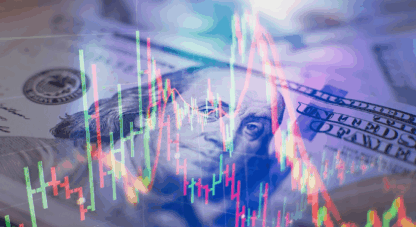Know What’s So
Yesterday Joe Biden apparently found out how much he was hurting his political party because what he knew for sure “just wasn’t so” as far as his support in battleground states was concerned. His advisors gave him the bad news, and even in his befuddled state he made the necessary decision. At least that was the story put forth by Politico. Perhaps the thing that Biden “knew,” but wasn’t so, was simply that his party still backed him.
We could note that many of Biden’s policies over the past three and a half years have likewise been based on such known-but-not-so beliefs, but this is not a political screed. To be fair, if the Republicans had not enacted many rainbow and unicorn policies of their own, Donald Trump would be a retired former reality TV star and billionaire real estate magnate cooling his heels at Mar-a-Lago.
But here we are, early in the second half of 2024, facing a massive disconnect with reality. We are angering Russia, China, and the entire Arab world even though we have a military that kicked its best critical thinkers out for not taking a hastily concocted, unproved “vaccination,” and then subjected the remainder of its personnel to woke policies that will serve them poorly in battle.
That military’s materiel and munitions makers are being subjected to ESG and DEI considerations rather than competence and excellence standards for conducting business—as are all other companies in the US. Keep in mind that in the Civil War, WWI, WWII, and the Cold War, the US won due to its economy first, its military second.
We have promised “entitlement” payments far in excess of what we can pay. And then, to make sure the economy is well and truly tanked, we have constructed it entirely with borrowed money. Trillions and trillions of dollars’ worth of borrowed money. To stop the inflation that such borrowing has caused, we have raised interest rates so high we’re having trouble paying back the money we owe.
Again, this is not a political screed. People from both sides of the aisle have signed on to these policies. But they’re policies with very high price tags, and their payments are coming due. When is entirely a matter of conjecture, but we have called the tune, and the piper has his hand extended. We are about to find out what reality thinks of our hard-boiled opinions.
The dollar is entirely a creation of this flawed system. It is backed only by the full faith and credit of the US government. By extension, the entire economic system based on it is also downstream from the US government, and also at risk.
Americans have long enjoyed the many benefits of this country’s system of government and relatively free markets. Collective efforts can confer immense benefits when they’re well advised and executed. But when they’re not, it pays to have backup plans and fallback options that are not collective efforts, but under your control. Such things are prominent among the topics discussed in the publications summarized below.
Key Takeaways:
- When the dollar breaks, gold will hold
- The bright side of short squeezes
- Are we already in recession?
- Gold is talking; are you listening?
The McAlvany Weekly Commentary: Greg Weldon: Silver Looks Good Here
Greg Weldon returns to the Commentary after a 15-year absence, and proceeds to make up for lost time. He and David cover a lot of ground, beginning with some of the causes of the climate extremes and political discord that plague much of the world right now. They discuss residential and commercial real estate, the labor market, and the possibilities for imminent recession. From there, they talk about quantitative tightening, dollar strength, and the true rate of inflation. An argument could be made, says Greg (though he doesn’t make it), that the real rate of inflation is 18%. How? By measuring the dollar’s value against a value-retaining currency—gold. “When the dollar breaks for real, which I think is just on the horizon here, that’s when you’re going to see the fireworks in the metals. And I think we’re on the cusp of seeing that.” Greg discusses a unique view on the Japanese yen before also sharing some thoughts on gold and silver.
Credit Bubble Bulletin: Election on the Brink
Doug begins his weekly wrap-up with media excerpts related to the aftermath of the assassination attempt on Donald Trump and Joe Biden’s tenacious hold on power (since relinquished). The nation is more divided than ever, though both Trump and Biden called for unity after the shooting. From there, he discussed the fallout from Trump’s comment that Taiwan should pay the US for its defense. AI stocks sold off sharply in response. In reporting on these developments, Doug often provides helpful insights such as this one: “This week likely marked the onset of a period of de-risking/deleveraging. Short squeezes are typically bullish developments. Bearish positioning gets caught on the wrong side of a rising market, with urgent buying stoking market exuberance. And yet squeezes can also be indicative of poorly positioned leveraged speculators caught suddenly on the wrong side of important developments—with the levered players rushing to de-risk both short and long positions. To be sure, the entire marketplace has been overweight big tech in historical extremes.” Investors who were long AI and/or short regional banks or home building stocks rapidly adjusted their positions as the market shifted.
Hard Asset Insights: A Chat with Danielle DiMartino Booth
In lieu of his usual letter on economic and financial developments, Morgan provides the transcript of an interview he conducted of Danielle DiMartino Booth. Danielle spent nine years at the Federal Reserve Bank of Dallas as advisor to President Richard W. Fisher during the Great Financial Crisis and until his retirement in 2015. She is the founder of QI Research and the author of FED UP: An Insider’s Take on Why the Federal Reserve is Bad for America. She is also a frequent commentator on major financial news programs. Her insights are unique in the discussion of Fed policy—neither entirely speculative, as are the thoughts of analysts outside the Fed, nor practically constrained, as are the comments of current Fed officials. She starts the interview by pointing out the difference between employment data provided by the Bureau of Labor Statistics (non-farm payrolls) and hard data that’s gathered by the Census Bureau (the Quarterly Census of Employment & Wages). The latter is “based on what US employers have actually reported as their headcount,” and is thus more accurate. It indicates a “net job loss of negative 192,000 in the three months ended September 30th, 2023,” and such losses historically indicate recession. She also has some insights on Fed head Powell that you won’t find anywhere else.
Golden Rule Radio: Don’t Wait Until It’s Too Late To Buy
Tory, Miles, and Rob begin the program with a look at the metals. Gold hit all-time highs, but the white metals failed to follow suit, turning in performances that ranged from very slightly up to significantly down. Leading into the AI downturn, the Dow and Nasdaq also hit all-time highs. Miles uses his charting abilities to put gold’s current achievement into perspective, noting that there’s a chance gold could turn down a bit before resuming its upward course. He gives his estimate for the next high in gold’s price, and then gives some advice to people who are sitting on the fence about buying gold. Supply can become a significant issue when gold is in such a strong bull market, and many who wait too long can find the supply of gold very constrained. Gold buying throughout much of the world has been so strong that supplies are already reduced, so an uptick in demand in the US could cause shortages. Rob points out that gold does well when people lose faith in important things such as the currency, the financial system, or the political situation. Americans, he says, are losing faith in the media and governmental agencies. Miles concurs, and points out that American markets are still mostly rational. They have experienced irrational periods recently, but are still predominantly rational. If they become irrational, that is when gold really comes into its own.















